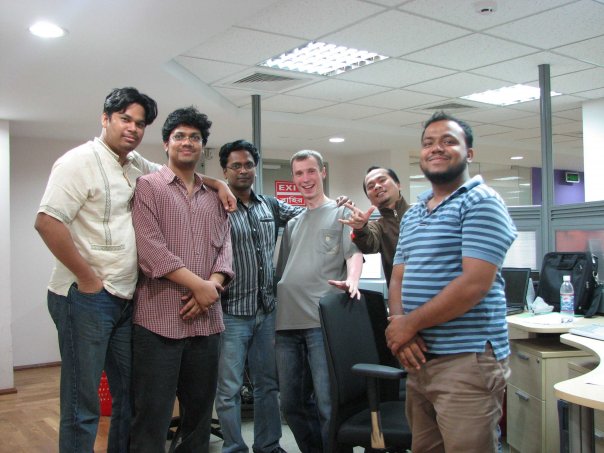Темой экономических и расчетных систем я интересовался достаточно давно и поэтому не мог пропустить разговора относительно "идеолога" микрофинансовых операций Мухаммада Юнуса (Muhammad Yunus) во время своей поездки в Бангладеш (Юнус оттуда родом).


В идеале, конечно же, все выглядело замечательно - Юнус разработал методологию кредитования беднейших слоев населения (в первую очередь - из сельской местности) и вовлечение этого "человеческого ресурса" в глобальный экономический рынок. На определенное время чуть ли не главным двигателем роста Бангладеша стала текстильная индустрия, которая "засасывала" в себя экономически и социально активное население.
Bangladesh's garment industry is geographically more dispersed than Mexico' s. This is despite a concentration of activity in and around the capital city of Dhaka, and a growing garment manufacturing presence in the country's export processing zones (EPZs). Bangladesh's garment industry also appears to be more entrepreneurial - more than 95% of garment factories are owned by Bangladeshi companies or families rather than foreign investors.Потом, как всегда (тм), начались трудные времена - посыпались (в прямом смысле) фабрики, работники стали "слишком много себе позволять", выходить на улицы и всячески протестовать против сложившихся порядков.
The fact that most of the investment is in local hands means Bangladeshi owners have a vested interest in the industry's future. Investment in the Mexican garment export industry, by contrast, is probably more susceptible to the impulses of foreign investors and to changes in the relative competitiveness of different production locations.

Ну а вслед за социальными трудностями стали всплывать и трудности чисто экономического порядка и, честно сказать, как-то трудно сказать какие из этих трудностей страшней. Так, к примеру, в статье "The Bangladesh poor selling organs to pay debts" написали о том, каким образом происходит "расчет" за накопленные долги и как это больно и страшно:
Kalai, like many other villages in Bangladesh, appears a rural idyll at first sight. But several villagers here have resorted to selling organs to pay back microcredit loans that were meant to lift them out of poverty. Journalist Sophie Cousins reports on an alarming consequence of the microfinance revolution.
Green rice paddies surround the dusty, narrow road to the heart of Kalai, a village six hours north of Dhaka, in Bangladesh's Jotpurhat district. Children play naked, hanging off stringy bits of bamboo that hold up the makeshift hut they live in.
They, like millions of other rural Bangladeshis, grow up facing a life of hardship. In an attempt to alleviate poverty, countless numbers take on debt with microcredit lenders, only to find themselves in a difficult situation when they are unable to repay the loan.
Some have even turned to selling their organs as a last resort to repay the loans and escape the vicious cycle of poverty.
Alexander (c) Stikhin